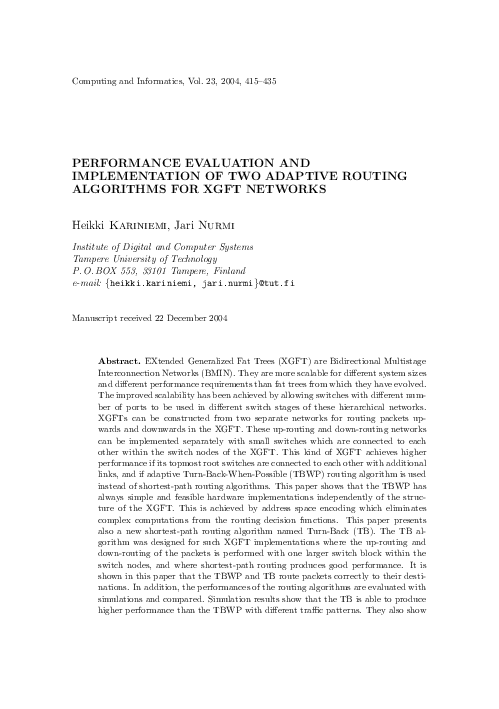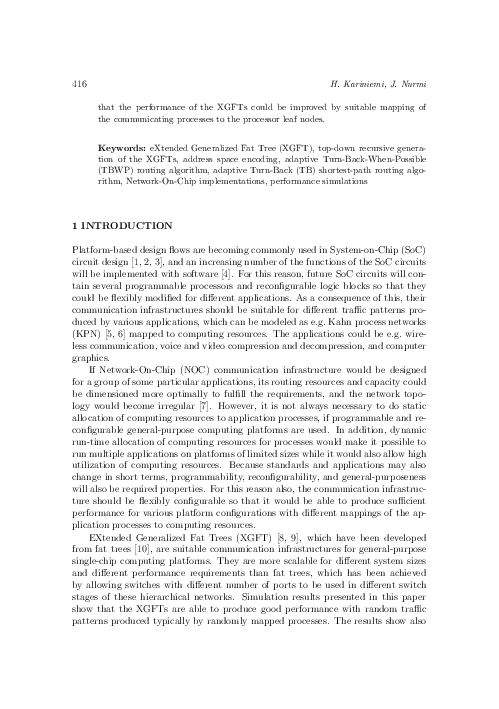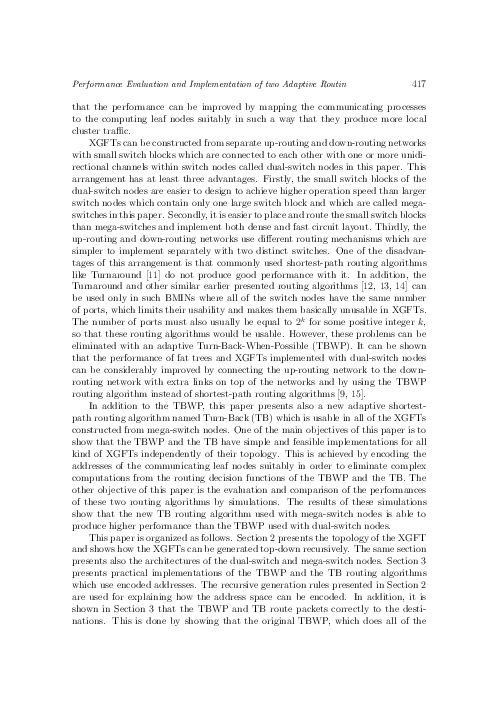Performance Evaluation and Implementation of two Adaptive Routing Algorithms for XGFT Networks
keywords: eXtended Generalized Fat Tree (XGFT), top-down recursive generation of the XGFTs, address space encoding, adaptive Turn-Back-When-Possible (TBWP) routing algorithm, adaptive Turn-Back (TB) shortest-path routing algorithm, Network-On-Chip implementations, performance simulations
EXtended Generalized Fat Trees (XGFT) are Bidirectional Multistage Interconnection Networks (BMIN). They are more scalable for different system sizes and different performance requirements than fat trees from which they have evolved. The improved scalability has been achieved by allowing switches with different number of ports to be used in different switch stages of these hierarchical networks. XGFTs can be constructed from two separate networks for routing packets upwards and downwards in the XGFT. These up-routing and down-routing networks can be implemented separately with small switches which are connected to each other within the switch nodes of the XGFT. This kind of XGFT achieves higher performance if its topmost root switches are connected to each other with additional links, and if adaptive Turn-Back-When-Possible (TBWP) routing algorithm is used instead of shortest-path routing algorithms. This paper shows that the TBWP has always simple and feasible hardware implementations independently of the structure of the XGFT. This is achieved by address space encoding which eliminates complex computations from the routing decision functions. This paper presents also a new shortest-path routing algorithm named Turn-Back (TB). The TB algorithm was designed for such XGFT implementations where the up-routing and down-routing of the packets is performed with one larger switch block within the switch nodes, and where shortest-path routing produces good performance. It is shown in this paper that the TBWP and TB route packets correctly to their destinations. In addition, the performances of the routing algorithms are evaluated with simulations and compared. Simulation results show that the TB is able to produce higher performance than the TBWP with different traffic patterns. They also show break break that the performance of the XGFTs could be improved by suitable mapping of the communicating processes to the processor leaf nodes.
reference: Vol. 23, 2004, No. 5-6, pp. 415–435


